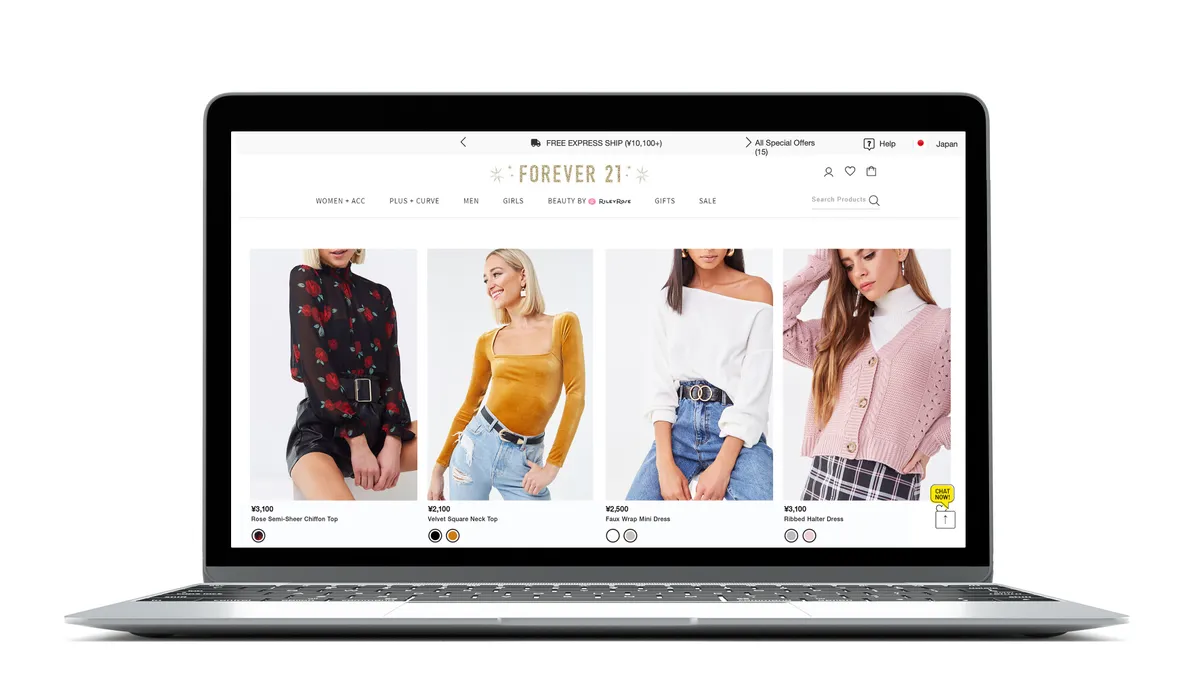Dive Brief:
-
Forever 21 is relaunching its international online store to target consumers in Canada, Asia, the Asia-Pacific region and Latin America, in partnership with cross-border e-commerce platform Global-e.
-
Global-e enables the site to support more than 95 currencies, more than 150 local and alternative payment methods, and localized tax and duties calculation, and allows customers to checkout and make returns in 21 languages, according to a press release from the companies that was emailed to Retail Dive.
-
The U.S.-based, privately held fast-fashion retailer filed for bankruptcy in September, saying at the time that it would close as many as 178 U.S. stores along with most of its international stores in Europe and Asia, in order to refocus on its U.S. and Latin American businesses.
Dive Insight:
Forever 21's bankruptcy for many observers is a sign of the times — of the demand for sustainability and good value that is seen as the catalyst for growth in apparel rental and resale.
At least in the U.S., that is driving a slowdown in overall apparel sales and throws Forever 21's longer term prospects into question. That may be one reason why, despite centering its post-bankruptcy operations on the U.S. and Latin America, the fast-fashion retailer doesn't want to completely let go of its potential abroad.
In a statement, Forever 21 President Alex Ok said that the retailer has seen ongoing demand from customers in regions where it has plans to exit. "Ecommerce forms a large chunk of the profitable core of our operations and as part of our new global strategy, Forever 21 will leverage Global-e's technology to offer international customers an outstanding online experience," he said.
The global e-commerce market remains an opportunity, according to Matthew Merrilees, Global-e CEO, North America. "Over 60% of Australian online shoppers and more than 80% of Canadian online shoppers are now purchasing from international retailers, and we're also noticing a growing trend towards cross-border ecommerce from a variety of markets across [the Asia-Pacific region] and [Latin America]," he said in a statement.
Forever 21 has largely ignored e-commerce in any region, which relegated its online sales to just 16% of its $3.3 billion in revenue (a bit of information only available thanks to bankruptcy court filings). That has left "a void in their business model" that made it vulnerable to online competitors "like Asos, Target, and Fashion Nova," according to Shawn Grain Carter, a professor of fashion business management at the Fashion Institute of Technology.
And the retailer has said little about the current demand for slower, more sustainable fashion. Even H&M, arguably the world's largest fast-fashion retailer, has taken note of the environmental concerns in launching sustainable production and resale operations. Forever 21, meanwhile, last year earned a "fail" score from the nonprofit Green America.














